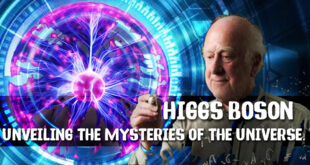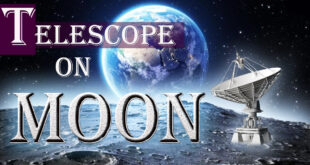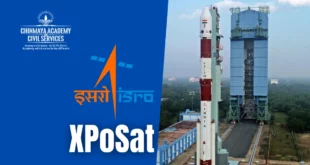Concept : About Higgs Boson The Higgs boson imparts mass to elementary particles like electrons and quarks, being fundamental to the Higgs field. It is among the 17 elementary particles constituting the Standard Model of particle physics, the leading framework describing the universe’s fundamental constituents. The Higgs boson earns …
Read More »Total Solar Eclipse Ramadan: Spectacle of Sun, Moon and Earth
Total Solar Eclipse: A total solar eclipse occurs when the Moon moves between the Sun and Earth, completely obscuring the Sun’s disk and casting a large shadow on the Earth’s surface. Those located within the path of totality, where the Moon’s shadow fully covers the Sun, witness a total solar …
Read More »Exploring the Cosmos: Revolutionizing Astronomy with Telescopes on the Moon – PRATUSH and Beyond
TABLE OF CONTENTS News Concept Why no moon? Upcoming Project News: Astronomers are looking forward to opening a new window on the universe by posting high-resolution telescopes on the moon and in orbit around it. There are numerous proposals to do this from astronomers around the world, including one from …
Read More »XPoSat
The XPoSat is an Indian Space Research Organisation (ISRO) manufactured space observatory to study polarisation of cosmic X-rays. It was launched on 1 January 2024 on a PSLV rocket, and it has an expected operational lifespan of at least five years. The telescope is being developed by the Raman Research …
Read More »Pragyan confirms sulphur near south pole of moon; search on for hydrogen
Syllabus: Space technology Pragyan rover has confirmed the presence of sulphur on the moon’s surface, near its south pole. The Laser-Induced Breakdown Spectroscopy (LIBS) instrument aboard the rover has made the first-ever in-situ measurements on the elemental composition of the lunar surface near the south pole. The LIBS is a …
Read More »As Pragyan digs deep into moon, scientists at a VSSC lab turn their gaze to solar wind
Syllabus: Space technology Context: Aditya-L1 mission, meant to study the sun, lifts off in September. First space-based Indian mission to study the sun from a halo orbit around the Lagrangian point 1 (L1) of the sun-earth system. XL variant of the Polar Satellite Launch Vehicle (PSLV) to place the Aditya-L1 …
Read More »ISRO releases graph of temperature variation of topsoil in lunar South Pole
Context: ISRO released a graph of the temperature variation on the lunar surface measured by the Chandra’s Surface Thermophysical Experiment (ChaSTE) payload measured the temperature profile of the lunar topsoil around the South Pole A temperature probe equipped with a controlled penetration mechanism capable of reaching a depth of 10 …
Read More »Why did Chandrayaan-3 land on the near side of the moon?
Syllabus: Space technology Near side refers to the portion of the moon visible to us (about 60%). It is always the same side that is visible from Earth because the moon takes the same time to rotate about its axis as it does to circle around the Earth. The ‘new …
Read More »Chandrayaan 3
Syllabus: Space technology With Vikram, the lander module of Chandrayaan-3, successfully landing on the surface of the moon on Wednesday, the focus has now moved to the rover in its belly, Pragyan. The rover will carry out in-situ chemical analysis of the lunar surface on the move. The Pragyan rover …
Read More » Chinmaya IAS Academy – Current Affairs Chinmaya IAS Academy – Current Affairs
Chinmaya IAS Academy – Current Affairs Chinmaya IAS Academy – Current Affairs



